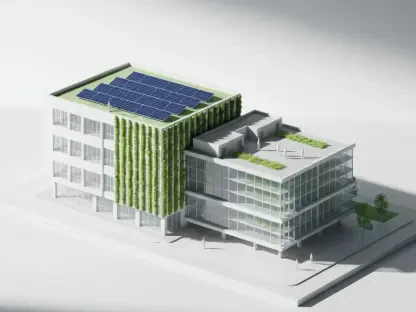In recent years, Central Pennsylvania has witnessed a dynamic transformation in its commercial real estate sector, driven by a combination of factors such as economic growth, urbanization, and a shift in consumer preferences. This evolution encompasses sales, leases, and development projects that highlight the region’s adaptability to changing commercial demands. Within this vibrant landscape, developers and businesses have focused on repurposing spaces, integrating mixed-use facilities, and attracting reputable brands. The region’s attractiveness is evident not only through its ability to draw well-known brands but also through its receptivity to new businesses, reflecting a thriving economic climate. The expansion and reshaping of commercial spaces are indicative of an area poised for sustained growth, providing both opportunities and challenges for stakeholders. The ongoing developments in counties across South-Central Pennsylvania underscore a commitment to economic revitalization and urban renewal, positioning the region as a strategic hub for future investments.
Retail and Industrial Space Transformations
In Central Pennsylvania, the retail sector is undergoing significant transformations as businesses adapt to changing consumer habits and preferences. A prime example of this shift is the leasing of retail spaces by established brands like Buffalo Wild Wings Go in Lower Paxton Township. This move not only highlights the demand for accessible dining options but also emphasizes the region’s ability to attract respected brands. Such developments are part of a broader trend in which restaurants seek to expand their footprint in suburban and urban areas, catering to the growing appetite for convenience. Additionally, this adaptive reuse is prevalent in Berks County, where Forman Mills has leased a former Big Lots store. This repurposing of retail spaces reflects an emerging strategy focused on utilizing existing structures to accommodate new business models. It highlights a cost-effective approach that capitalizes on current infrastructure while bringing vitality back to long-standing commercial zones.
The industrial sector is also experiencing a resurgence, with significant investments being funneled into various projects aimed at boosting local economies. These endeavors not only provide valuable job opportunities but also fill gaps within the supply chain, reinforcing the area’s logistical advantages. Developers are increasingly targeting prime locations that offer excellent connectivity and accessibility, making Central Pennsylvania a preferred destination for industrial real estate investment. A key factor contributing to this growth is the region’s strategic location along major transportation corridors, offering seamless access to significant urban centers along the Eastern Seaboard. This logistical advantage ensures efficiency in distribution and fulfillment, making the area attractive for businesses aiming to streamline operations.
Mixed-Use Developments: The Future of Community Spaces
Mixed-use developments are gaining traction throughout Central Pennsylvania due to their ability to meet diverse community needs. These projects, which incorporate residential, retail, and commercial elements, are changing how space is utilized, offering convenience and accessibility in a cohesive environment. One of the noteworthy projects in this realm includes the planned development by Jordan Ilyes to transform various properties in McSherrystown into a multi-functional complex. This initiative embraces innovative urban design by integrating multifamily residential units with retail amenities, providing a holistic living experience. Such undertakings reflect a progressive vision that aligns with contemporary demands for interconnected spaces that foster community engagement.
The appeal of mixed-use developments is rooted in their capacity to create thriving environments where people can live, work, and socialize in close proximity. This integration not only enhances the quality of life but also reduces the reliance on personal vehicles, contributing to sustainable urban planning. As residents seek accessible amenities, these developments offer unparalleled convenience, promoting pedestrian-friendly neighborhoods. Additionally, mixed-use projects generate economic opportunities by attracting diverse businesses and increasing foot traffic, ultimately supporting local enterprises. This approach exemplifies how adaptive infrastructure can cater to modern lifestyles while embracing principles of economic sustainability.
Trends in Office and Corporate Relocations
Office space and corporate relocation trends in Central Pennsylvania reflect a shift towards optimizing operational efficiency while expanding corporate reach. Businesses are actively seeking locations that offer enhanced accessibility and strategic positioning to better serve their clientele. One compelling example is the acquisition by Community C.A.R.E.S. of a significant office building at 230 S. Spring Garden St. in Carlisle. This move exemplifies the commitment of organizations to secure permanent spaces that align with evolving service delivery models. By establishing a stable operational base, businesses can expand their reach, increasing service quality and offering greater community support. This strategic decision mirrors a broader trend where companies are reevaluating their spatial needs to align with changing operational demands and technological advancements.
Furthermore, the pursuit of prime office locations extends to the purchase of prominent properties such as the professional building at 3300 N. Third St. in Harrisburg. Such acquisitions underscore the importance of establishing a strong physical presence in burgeoning areas to capitalize on economic growth and regional development. These strategic investments reflect confidence in the region’s potential, as businesses position themselves to benefit from the expanding market. The demand for adaptable office spaces that can accommodate various needs is driving the evolution of commercial properties, with owners emphasizing flexible layouts and modern amenities. This adaptability is crucial, as it facilitates seamless integration of emerging technologies and supports remote working arrangements, thereby ensuring long-term viability.
Community-Centric Strategic Investments
Strategic investments in community-centric real estate projects are reshaping the commercial landscape in Central Pennsylvania, bringing an enhanced focus on creating vibrant community spaces. This shift reflects a broader understanding that real estate developments must align with community aspirations and contribute positively to the local environment. A notable trend observed is the repurposing of existing structures to accommodate new tenants, transforming aging properties into bustling hubs of activity. Developers are increasingly adopting this strategy to breathe new life into previously underutilized locations, effectively providing renewed economic and social value to the area.
These efforts are supported by a growing emphasis on incorporating accessibility and functionality into real estate projects, ensuring that new developments meet diverse public needs. The focus is on creating welcoming environments that foster social cohesion, offering residents spaces that enhance their quality of life. Retailers are particularly attracted to high-traffic locations, eager to capture the attention of consumers who value convenience and choice. By strategically positioning their establishments in these areas, retailers can capitalize on foot traffic while contributing to a lively urban fabric. The concerted effort to enhance accessibility and functionality in commercial properties is at the heart of these investments, driven by the understanding that successful developments are those that adapt to meet evolving consumer preferences and community dynamics.
A Promising Outlook for Central Pennsylvania
In Central Pennsylvania, the retail landscape is experiencing notable shifts as businesses adjust to evolving consumer behaviors and demands. This change is illustrated by established brands like Buffalo Wild Wings Go leasing spaces in Lower Paxton Township, signaling a strong demand for convenient dining options. These improvements underscore the area’s capability to attract prominent brands, aligning with a broader trend where restaurants are expanding into both suburban and urban areas to meet the desire for convenience. Another example is Berks County, where Forman Mills has moved into a repurposed Big Lots store, highlighting a strategy of using existing structures for new business models. This approach proves cost-effective and revitalizes commercial zones by making efficient use of current infrastructure.
The industrial sector is similarly on an upswing, with significant investments aimed at bolstering local economies by creating jobs and optimizing supply chains. Developers focus on prime locations with excellent connectivity, making Central Pennsylvania a favored spot for industrial real estate. The region’s strategic location along major transportation corridors enhances distribution and fulfillment efficiency, attracting businesses looking to streamline operations. This logistical advantage makes the area a magnet for investment, promoting sustained growth and prosperity by providing seamless access to urban centers along the Eastern Seaboard.









